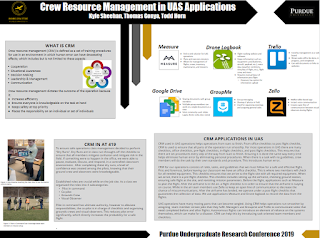In week 8, the C-Astral Bramor came in. Since this platform is going to define this program this was of utmost importance, especially since my main role for this class is main flight engineer. I will become familiar to the setup, operation, and structure of this platform. My job will be to train a single team to operate this fixed wing. Since everyone should get time on this platform, we will cycle out 1 person from the main team. This will ensure everyone gets training with the Bramor. When we first opened it, it came in two cases. One case had the catapult and one had the platform with accessories (except the 42 megapixel camera, which was included with the catapult).
In the picture below, you can the Bramor in one case, then the catapult in the other. Our task was to set it up with the given checklist. Kyle was in charge of reading off the checklist items, and I was following the tasks given to me by Kyle.
 |
Air frame (Box above)
Catapult (Box below) |
 |
The wings are stored in an upper compartment
in the air frame box. |
This Bramor was special due to its sensor package. This one had a Red Edge Altum integrated into its air frame. It
had special EMI shielding measures and mount design.
Below shows a photo of the top of the flying wing. The cover fits into the top by a latching pin and a lip that slides into the air frame. To us, this seemed like a design flaw, especially since the lip had a broken edge which made it very difficult to slide the lip into the slot. The cords in the photo are used to secure the parachute to the air frame. This is the only known method of safe landing so it is crucial. The two rubber tubes in the top middle of the photo is part of the pitot tube system. Looking just past the leading edge of the wing you can see the black pitot tube. The compartment with the "remove before flight" tag is where the parachute is held and deployed. It is deployed by a spring board that launches it out into the air, away from the propeller. Looking closely you can see tape on the air frame next to the red triangles. This tape is one of the important checklist items, its task to ensure redundant fastening of the wings to the fuselage. A feature you cannot see but is included on the air frame design is vortex generators. Just behind the leading edge of the wing is a piece of thick material that disrupts airflow over the top of the wing. Vortex generators are used to
delay flow separation at high angles of attack by re-energizing the boundary layer. Since this aircraft can be subjected to high angles of attack to compensate for high winds, this is helpful for functionality.
 |
Bramor checklist dry run. This air frame has some interesting features that makes it unique.
Some of the parts on this are also 3D printed such as the engine cooling cowl. |
After running through the checklist carefully we did find some flaws with the checklist. It says to open to parachute port which normally wouldn't matter, but it says to do so before the aircraft has power. Which the only way to open the parachute port is through the ground control station. We will fix this by making small modifications to the checklist.
After we set up the air frame we familiarized ourselves with the catapult. This is the only method of launching the Bramor and it is crucial to know its functionality. The catapult works by using elastic cords under tension. You wrap the rubber to two points on the front of the catapult, then you use a winch to put the rubber under high tension. Once you are ready to launch, the user pulls a safety pin, then pulls a cord. The Bramor is launched quickly off the catapult and into the air where it automatically turns on its motor then proceeds to the mission. Below is a photo of the Bramor set up on the catapult and "ready" to launch. Since it was indoors we took precautionary measures to ensure it wouldn't take off. The red cords leading form the back to the front of the catapult launch the Bramor, without these it would never be able to take off. One of the checklist items is to ensure that no cords are tangled, this could cause a difficult launch or even a crash. The winch is down near the bottom of the catapult. Like a normal winch, you crank it to slowly build up tension on the cords.
 |
Bramor and Catapult all set up ready to fly. Since this is inside, there are certain checklist items
we could not complete (GPS, wind speed, weather...etc) we did our best to complete a dry run. |
 |
Catapult pre-setup. The elastic cords have not been attached to the frame of catapult. The air frame
bucket is made from carbon fiber and weighs very little. This helps with weight reduction for a faster
launch. Giving the bramor more speed to work with. |





















